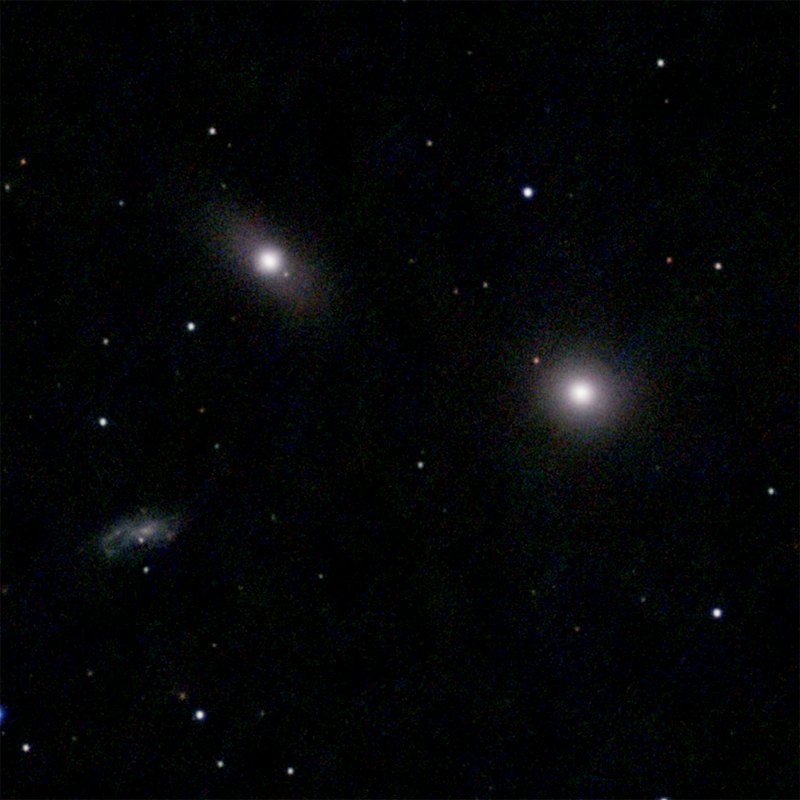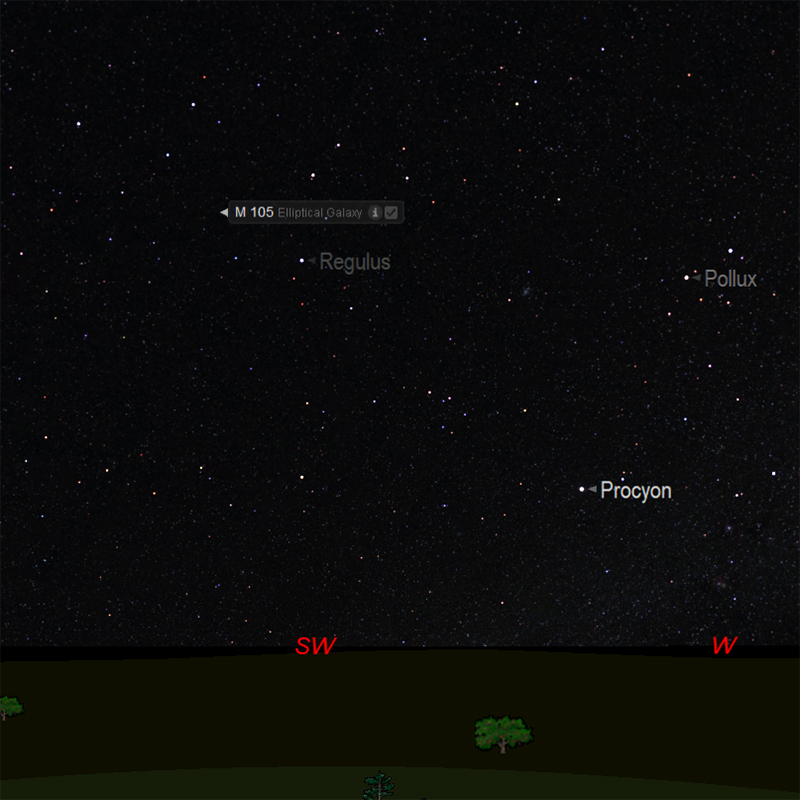M105

Credits: Keith Turnecliff, Nerja, Spain
M105 is an elliptical galaxy 32 million light-years away in the constellation Leo. It is the largest elliptical in the Messier catalog that is not a member of the Virgo cluster of galaxies.
M105 does, however, belong to the M96 (or Leo I) Group, which includes neighbors M95 and M96 as well as several other fainter galaxies.
Charles Messier’s colleague Pierre Méchain discovered M105 in 1781 just a few days after locating M95 and M96. Yet M105 was not originally included in Messier’s catalog.
It was added in 1947 after astronomer Helen S. Hogg found a letter written by Méchain describing the galaxy.
This Hubble image of M105 was taken in near-infrared and visible light. Like most elliptical galaxies it appears rather featureless and inactive.
However, Hubble observations surprised astronomers by revealing young stars and star clusters in M105, indicating that star formation is still taking place in what was thought
to be a “dead” galaxy no longer capable of giving birth to new stars.
Other Hubble observations measured the speeds of stars moving around the center of the galaxy, which demonstrated that a supermassive black hole resides at M105’s core.
Best observed in April, M105 has an apparent magnitude of 10.2 and can be spotted with a small telescope.
Large telescopes will uncover two fainter galaxies NGC 3384 (top left) and NGC 3389
bottom left) close to the bright elliptical.
Facts about M105 by Keith Turnecliff
The galaxy lies at a distance of 32 million light years from Earth and has an apparent magnitude of 10.2. Its designation in the New General Catalogue is NGC 3379.
M105 occupies an area of 5.4 by 4.8 arc minutes of apparent sky, which corresponds to a linear extension of 54,000 light years.
The galaxy is difficult to see in small binoculars and easier to find in large binoculars and small telescopes.
3-inch telescopes show a small, round faint patch of light, while 8-inch telescopes reveal a larger object, but do not show more detail.
Like any elliptical galaxy, M105 is not particularly impressive to observe because details of its structure cannot be made out in any kind of telescope.
10-inch telescopes will reveal two neighbouring galaxies, NGC 3384 and NGC 3389, in the same field of view.
The best time to observe M105 is during the Spring.

Best Viewed with resolution 1980 x 1020.
Credits: Image courtesy of Starry Night Pro Plus 8, researched and implemented by Keith Turnecliff.